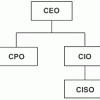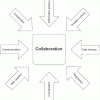Business Transformation Requires Transformational Leaders
Leadership and teaming skills are front and center in times of rapid change. Meet today’s constant disruption head on with expert guidance in leadership, business strategy, transformation, and innovation. Whether the disruption du jour is a digitally-driven upending of traditional business models, the pandemic-driven end to business as usual, or the change-driven challenge of staffing that meets your transformation plans—you’ll be prepared with cutting edge techniques and expert knowledge that enable strategic leadership.
Recently Published
ROI Analysis of Security Technology: Why Bother?
There are good reasons not to analyze the ROI of security-related technology. First, the value of security technology is reminiscent of an insurance policy since you experience its true value only when something bad happens. Consequently, its benefits are the costs avoided in not falling victim to the various security threats lurking in the ether -- benefits that can be difficult to quantify. Second, regulations and laws have a way of influencing investment behavior.
Creating a Working ERP Through Reciprocal Negotiations
Enterprise resource planning (ERP) has proven to be the most popular business software of the 20th century and the trend continues to grow -- reaching new industries and market segments around the globe [3]. Firms implement ERP because they expect the software to enable strategically important organizational change. However, many organizations find that achieving the business objectives associated with ERP technology adoption is problematic [4].
Partnering CxOs to Effectively Address Data Protection Concerns
Data privacy issues impact virtually every type of business. There are literally hundreds of laws and regulations within the US and throughout the world that require data safeguards to be implemented to help ensure the privacy and security of personally identifiable information.
Enterprise Architecture: It's Not Just For IT Anymore
Enterprise architecture (EA) has taken on renewed importance in the past few years. Yet this is in contrast to the fact that EA has largely had a history of failure to deliver on promised value. Much of this disappointment can be traced to a lack of alignment with business drivers and requirements. As enterprise architects, it is incumbent upon us to understand and address these failures and to deliver value that aligns with business goals.
Collaboration Issues in Vendor Relations
Business process outsourcing (BPO) is inherently a collaborative activity between the vendor and the enterprise customer. As such, it involves close cooperation between two business entities to achieve a mutual goal. That goal should be the fulfillment of obligations for the optimal operation of client services. The client obtains essential services, such as human resources, IT, or financial business process operations, and the vendor gains financial remuneration.
In the first half of this Advisor ("The Bane of the Automatic Stay in Bankruptcy," 10 May 2006), we took a look at careful contract wording as one way customers can protect their rights in the event that a software development vendor files bankruptcy.
Why CIOs Are in Trouble
We have recently encountered troubled CIOs and IT organizations with common symptoms. These symptoms characterize the uneasy relationship between IT and the rest of the business. As one CIO put it: "my business users do not understand what we do, and worse, do not value what we accomplish for them." As a result, the business users complain loudly about IT in general and about the high costs of IT in particular -- and this is never good.
IT organizations in trouble have the following symptoms in common:
Informatica Corporation is the latest software vendor to enter the software as a service (SaaS) market with a number of new announcements. First, Informatica detailed a bold new on-demand strategy. Second, it just introduced connectors for its PowerCenter data integration platform specifically tailored for Salesforce.com customers.













